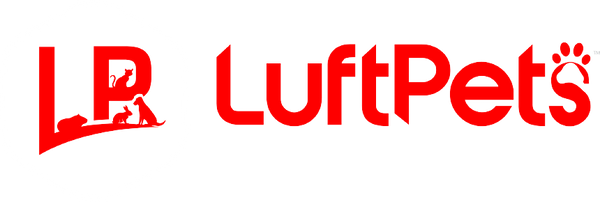Snuffle Mat with Detachable Lick Mat for Dogs - Foraging & Enrichment Toy
Snuffle Mat with Detachable Lick Mat for Dogs - Foraging & Enrichment Toy
Couldn't load pickup availability
This snuffle mat with a detachable lick mat is designed to provide your dog mental stimulation, enrichment, and engagement.
Measuring 40 cm in width, this mat is compact yet filled with features to keep your pet entertained.
The vibrant color scheme, with shades of blue, white, and dark navy, makes it visually appealing, while the varied textures encourage natural foraging behaviors.
The center of the mat features a removable 16 cm lick mat, which can hold treats or spreads, adding an extra layer of interactive fun.
The snuffle mat’s unique ribbon design allows you to hide kibble or small treats, making your dog work to find them. This stimulates their minds and slows down fast eaters.
The detachable lick mat in the center is textured to help soothe and calm your pet as they lick, promoting relaxation and reducing anxiety.
The mat’s non-slip backing ensures it stays securely in place during use, providing a stable and enjoyable experience for your dog.
Key Features
- Multi-Function Design: Combines a snuffle mat with a detachable lick mat for varied play and mental stimulation.
- Compact Size: At 40 cm wide, it’s suitable for most living spaces without taking up too much room.
- Detachable Lick Mat: 16 cm center mat can be used separately or with the snuffle mat, perfect for spreading peanut butter or other pet-safe treats.
- Mental Stimulation: Encourages natural foraging instincts, helping to keep dogs mentally sharp and reducing boredom.
- Durable and Safe: Made from pet-safe materials that withstand daily use.
- Non-Slip Backing: Ensures the mat stays in place during enthusiastic foraging.
This snuffle mat with a lick mat is ideal for pet owners looking to provide their dogs with an engaging activity that combines play, mental enrichment, and relaxation.
Perfect for small to medium-sized dogs, it’s a versatile and effective tool for enhancing your dog’s overall well-being.
Share




Frequently Asked Questions
1. What are cage liners for guinea pigs?
Cage liners for guinea pigs are specially designed mats or pads that are placed on the floor of the guinea pig's cage. They serve as a protective barrier, absorbing urine and preventing it from seeping into the cage floor. Cage liners help maintain a cleaner and more hygienic environment for your guinea pigs.
2. Why should I use cage liners for my guinea pig's cage?
Using cage liners offers several benefits. They help to minimize odors by trapping urine and reducing ammonia buildup. They are also more comfortable for your guinea pigs to walk on than bare cage floors. Additionally, cage liners make the cleaning process much easier and save you time and money on bedding materials.
3. Are cage liners reusable?
Yes, most cage liners for guinea pigs are reusable. They are typically made from durable materials that can withstand multiple washes. After removing any solid waste, you can simply toss them in the washing machine and reuse them once they are clean and dry. Reusable cage liners are a cost-effective and eco-friendly option.
4. How often should I change the cage liners?
The frequency of changing cage liners depends on various factors, such as the size of the cage, the number of guinea pigs, and their habits. As a general guideline, it is recommended to change the liners at least once or twice a week. However, if you notice any strong odors or excessive soiling, it's best to change them more frequently.
5. Can I use cage liners with bedding materials?
Yes, you can use cage liners with bedding materials if you prefer. Some guinea pig owners find that using a combination of liners and bedding offers the best of both worlds. The liners provide a protective layer, while the bedding adds extra comfort and nesting material for the guinea pigs. Experiment with different setups to see what works best for you and your pets.
6. How do I clean cage liners?
Cleaning cage liners is simple. First, remove any solid waste from the liner. Then, shake off any loose debris or hay. You can either hand wash the liners with mild soap and warm water or toss them in the washing machine gently. Avoid using harsh chemicals or bleach as they may harm your guinea pigs.
After washing, lay the liner flat and smooth out any wrinkles or folds to straighten the liner. If needed, you can use a cool iron to get rid of persistent creases. Make sure the liners are thoroughly dry before placing them back in the cage.
For a more visual guide on these steps, here are some instructional videos that demonstrate cleaning and straightening the liners effectively.
7. Can cage liners be used in any guinea pig cage?
Cage liners are versatile and can be used in most guinea pig cages, including wire cages, plastic-bottomed cages, and C&C (cubes and coroplast) cages. However, it's important to choose the appropriate size of liners that fit your cage dimensions. Ensure that the liners cover the entire floor area of the cage to provide optimal protection and comfort.
8. Are cage liners safe for guinea pigs?
Yes, cage liners are generally safe for guinea pigs. They are designed to be non-toxic and pet-friendly. However, it's essential to choose high-quality liners that are free from any harmful chemicals or substances. Always check the product description and customer reviews before making a purchase. Additionally, monitor your guinea pigs for any signs of discomfort or allergies when using new cage liners.
9. Can cage liners help with odor control?
Yes, cage liners can help with odor control. They are specifically designed to absorb urine and minimize odors in the guinea pig's living area. However, it's important to maintain good cage hygiene by regularly cleaning the liners and the rest of the cage. Proper ventilation and regular spot




